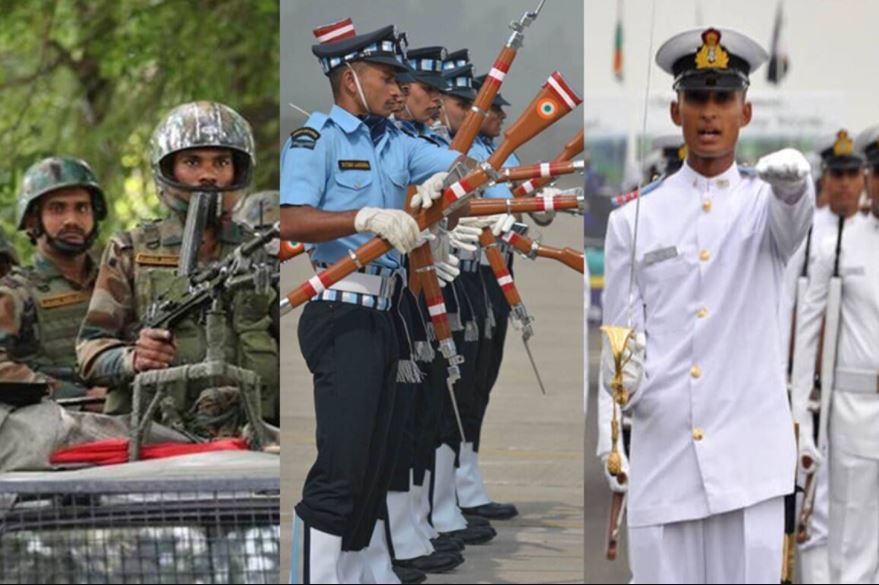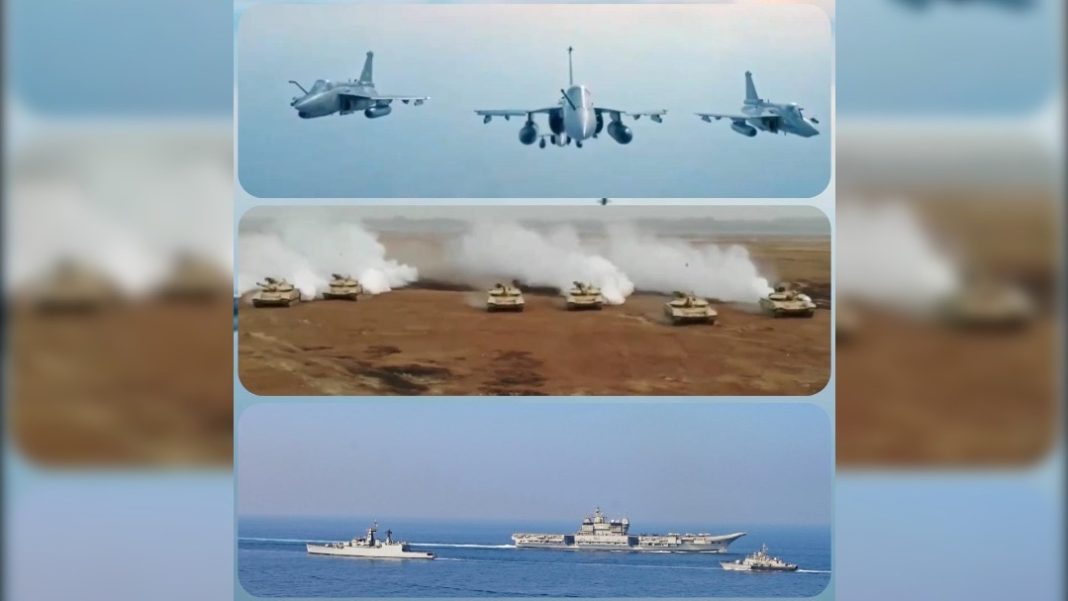Pakistan is visibly rattled. India’s announcement of Exercise Trishul — a large-scale tri-service military operation off the Gujarat coast and in the sensitive Sir Creek sector — has triggered unease in Islamabad at a time when the country is grappling with multiple crises on its own soil. For India, the drill is routine strategic preparedness. For Pakistan, it’s another reminder that its flanks are exposed — militarily, politically, and domestically.
Exercise Trishul, scheduled between October 30 and November 10, brings together the Army, Navy, and Air Force in a coordinated operation spanning land, sea, and air domains. The Defence Ministry describes it as a “joint readiness exercise” to test rapid mobilization and amphibious warfare capabilities along India’s western seaboard.
For Pakistan, the location of the drill is unsettling. The Sir Creek estuary, which forms part of the maritime boundary between Gujarat and Sindh, remains a long-disputed zone. It is not merely a muddy stretch of delta — it controls access to the Arabian Sea, within striking distance of Karachi’s naval command. By choosing this theatre, India has sent a quiet but potent signal: its maritime strategy now extends seamlessly from the Bay of Bengal to the Gulf of Kutch.
Pakistan’s response has been immediate. It issued multiple NOTAMs (Notice to Airmen) restricting airspace over southern Sindh and Balochistan, citing “operational safety.” Its media spoke of a “high-alert status” across naval and air bases. The reaction, though cloaked in caution, reeks of apprehension.
India’s military manoeuvre comes when Pakistan’s own strategic nerves are frayed.
On the western front, the Pakistan-Afghanistan border is once again in flames. Deadly clashes this month left several soldiers dead on both sides, forcing Pakistan to close key crossings. Relations with Kabul have plummeted since the Taliban refused to act against the Tehreek-e-Taliban Pakistan (TTP), which continues cross-border attacks with near impunity. Islamabad accuses the Taliban of harbouring anti-Pakistan militants, while the Taliban calls Pakistan’s security operations “provocations.”

Down south, the situation in Balochistan has gone from simmering to explosive. The province is witnessing a sharp spike in separatist activity, with armed groups attacking military convoys and occupying government land in protest against what they call the exploitation of local resources. Civil unrest has grown into open defiance. In several towns, protesters have openly challenged the state, accusing Islamabad of “colonizing” their land under the guise of development.
To make matters worse, intelligence reports suggest that two major militant factions — elements of the TTP and the Baloch Liberation Army (BLA) — have joined hands for tactical operations. For Pakistan’s overstretched security establishment, this emerging nexus is a nightmare scenario.
Given this backdrop, India’s Trishul drill lands as a sharp psychological blow. For decades, Pakistan relied on the comfort that India’s western command was largely defensive, while its own military could focus resources eastward. That balance is shifting. The Indian Navy’s new amphibious and air-sea integration exercises indicate an evolving doctrine — one that can neutralize Pakistan’s maritime leverage around Karachi and Gwadar.

The symbolism is unmistakable. While Pakistan struggles to hold its borders together, India is demonstrating unity of command and inter-service coordination. For Islamabad’s generals, this isn’t just about ships and aircraft — it’s about eroding credibility. A drill near Sir Creek doesn’t just project India’s military might; it underlines Pakistan’s strategic fatigue.
With domestic instability rising, Pakistan’s traditional strategy of saber-rattling and internationalizing the “India threat” is losing traction. Few nations are inclined to echo its narrative, especially as India’s actions are framed within sovereign waters and established defence protocols.

That leaves Pakistan with two options — either escalate rhetorically, as it is now doing through media warnings of “regional destabilization,” or turn inward and fix its governance vacuum. The first will fetch headlines but not stability; the second requires the political will Pakistan currently lacks.
Even as Islamabad issues airspace curbs and puts its coastal units on alert, its internal disunity is evident. The Baloch insurgency, tribal resentment along the Durand Line, economic stagnation, and the resurgence of militant networks have combined to hollow out the state’s authority. Under these conditions, a powerful neighbour flexing military readiness inevitably feels threatening.
India’s Exercise Trishul is not an act of aggression; it’s a statement of preparedness. But for Pakistan, hemmed in by border chaos and internal rebellion, it serves as a reality check. Strategic deterrence doesn’t come from rhetoric or reactionary NOTAMs — it comes from political stability, disciplined governance, and control over one’s territory.
As the Indian tri-service ships and aircraft manoeuvre across the Arabian waters in the coming days, Islamabad will no doubt watch nervously from its radar rooms. Yet the real battle Pakistan needs to fight lies not across the Sir Creek — but within its own fractured borders.





